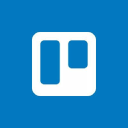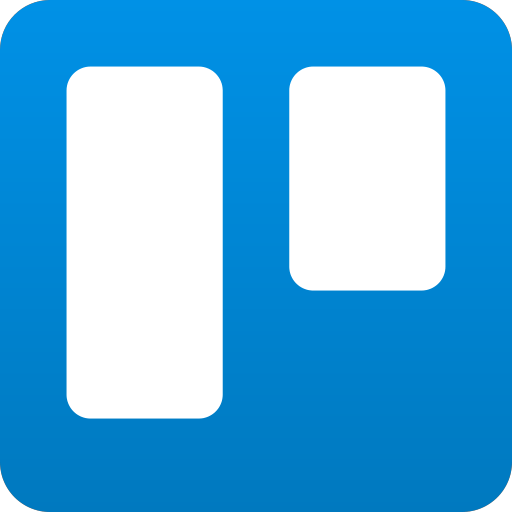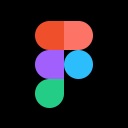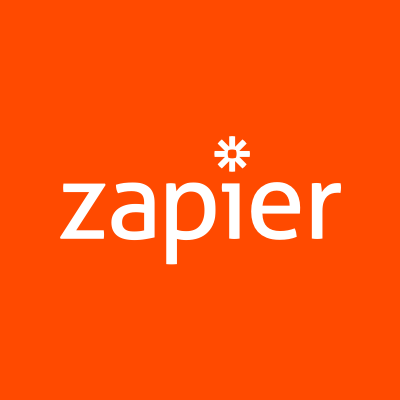How I Created A Micro-SaaS To Gather User Feedback Using No-Code Tools
Hello! Who are you and what business did you start?
Hello, I'm Cristian, I consider myself an entrepreneur and I’m from Barcelona. I created my first company in the year 2000, and now I work full-time in the third startup that I built and the one that is paying my bills. But a year ago I started a new side project: Fidlio.

Fidlio is a micro-SaaS. A software tool that allows other software companies to gather feedback and feature requests from their users. That helps them plan their roadmap and decide which features to build next, saving time and money.
Fidlio is a one-man project: I built everything myself, even the promo video that you can see on our website. But the main thing here is that I'm not a developer: I built Fidlio using no-code tools. It's amazing what you can achieve today with this kind of tool.
Since I have very little time to devote to Fidlio, it's still pre-revenue. I'm working on the Stripe integration right now.
What's your backstory and how did you come up with the idea?
As I said, I'm not a developer. I studied Industrial Design last century (wow, that sounds too old), but never worked as an industrial designer. I discovered the internet when I was finishing university, and after a few years, I started my first company with 2 more partners. It was an interactive agency, where we created all kinds of digital projects for our clients. The three of us were designers, so we soon started hiring developers.
I worked there for 15 years, and 5 years ago I created a new startup with another partner.
The winner is not always the best product, but the one that has a better mix of product, marketing, sales, customer success, etc.
It's a communication software for schools, we have more than 400 clients, and we are now making $40k in MRR. One of my responsibilities there is customer success, and I one day realized how difficult it was to manage all the suggestions and feature requests that our clients were constantly making. We started to manage that in an Excel sheet, but it was very inefficient.
I had discovered the "no-code" world a year before when I created a simple session booking app for a friend's yoga studio. I have never been able to code, I just know HTML, CSS, and very basic SQL. And I was amazed when I discovered that you could develop almost any kind of software project with Bubble, a great no-code tool. Things that would have been impossible without a developer before were now possible for me.
And that's when I decided to build Fidlio, a tool to manage user suggestions and feature requests. I loved the idea of trying to build something completely on my own. No partners, no investors, no developers, no employees, just me. I'm not saying this should always be the way to go: you'll go further and faster with a good team. But the idea of doing something on my own, completely bootstrapped, sounded very appealing to me at that time.
I started building Fidlio in December 2019. I worked on nights and weekends, and in February 2020 I released the first version. Those 2 months were really stressful. Running a full-time business, and married with 2 kids, I could only take time from sleep hours. And as we'll see, this had consequences.
Take us through the process of designing, prototyping, and manufacturing your first product.
This was, by far, the most interesting and funny part for me. Being able to build something completely by myself was really challenging, and I really enjoyed this part.
I started by looking for competitors. I knew there were already other solutions in the market, so I did quite a deep benchmarking of a few of them, the ones that I found most interesting. I compared 10 different tools, and ended signing up and deeply comparing 4 of them. I took notes of the different features they had, comments about their interface and UX/UI, onboarding process, pricing, etc.
With that information, and the needs that I had already detected managing that with an Excel file for years, I made a Trello board with all the features that I wanted for the MVP. After that, I designed all the screens using Sketch. I think this is the best approach. If you have to make design changes in Bubble once your page is finished, it can cost you a lot of time. Due to how groups and responsive design works in Bubble, some changes in design when everything is finished may take a lot of time.
Building everything first in Sketch or Figma ensures you that you won't need to change much in Bubble later. Designing everything in Sketch first might seem a waste of time in the beginning, and it's hard to do when you are eager to start building the real thing. But my experience tells me that, considering the time you'll save later, it's worth going this way.


The building process in Bubble was quite fast. I had almost everything planned and designed in Sketch, and the features that I wanted to develop were not that difficult. I obviously faced some unexpected challenges, but the Bubble community is great, and I always found a way to solve them all.
At the same time, I built the fidlio.com website on WordPress. It was just a one-page web highlighting the main features and benefits. I also made a video, since I think that those 1-2 minute videos explaining your product are a must in this kind of Saas products. I also did the video myself, and the only thing that I paid for was the voice-over.

All this process of research, designing in Sketch, building in Bubble, and creating the website and video took me about 2 months, working during nights and weekends. It was tough, but I really enjoyed it.
Describe the process of launching the business.
This was the part that scared me most. I’m not an influencer and don’t have many followers on any social media. I don’t have the budget either to start any paid campaign, so launching my project felt like opening a shop in the middle of the desert.
I listen to many podcasts and had heard of many successful startups launching on ProductHunt, so I decided to go that way. I found the way to get Chris Messina as the hunter for my project and thought that was all I needed. That launch day I got more than 90 votes on ProductHunt and 290 visits to my website. But just a couple of sign-ups. For a couple of days I got a decent amount of visits to my website, all coming from ProductHunt, but after that, back to the desert again.
Obviously, I was very naive to think that with a release on ProducHunt everything was done. That the snowball would start rolling and that I would get a decent amount of visits to my website regularly. This, which is something that seems obvious, at that time was a downturn for me.
I am now fully aware that launching and all the marketing needed to get visitors is a much more difficult task than the initial product development. At least for me. I really enjoy building things, but I don't enjoy making them known, talking about my projects, promoting them, etc.
Also, after more than two intense months, with almost no sleep and no rest, I was really burned out. To finish fixing it, a few weeks after the launch came to the lockdown. I am from Spain, and here we had total house confinement from the second week of March.
The confinement required me to work longer hours in my other company, the one that really feeds me, so I had to leave Fidlio totally abandoned for a few months.
Since launch, what has worked to attract and retain customers?
This is the saddest part of the story. I'm still really busy at my other company, and I haven't regained enough motivation to put in more hours on nights and weekends. It's really hard working nights and weekends if you don't have enough motivation.
Now I have started to be more active on Twitter, and I'm getting in touch with other bootstrapped entrepreneurs. This is helping me gain confidence, and I am slowly being able to dedicate more time.
I do know that this is a long-distance race. As I said at the beginning, I would surely go faster and further if I had a small team, if I could invest money to do the tasks that motivate me the least.
But this time this is not the path that I want to take. I know that I can get this project done, and I know that I will be proud as I achieve small goals. I do not intend to get rich with this project, but I believe that what I have built can be useful to many companies, and it is also true that I would like to build an extra income stream.
There are already several companies using Fidlio, but I have not implemented Stripe yet, therefore I do not have to pay customers for the moment.
How are you doing today and what does the future look like?
The positive part of being a bootstrapped project where I do everything is that the costs are practically zero. The only expense I have is the web hosting and the Bubble fee. That adds up to $300 a year, so it's an expense I can afford.
I know that practically all the stories we can read here are success stories, and I suppose you came here to see some shocking numbers. But for now, I have no figures to show. I know I will succeed, but I also know that it will take longer than I initially thought.
It has never been easier than now to build something.
My short-term plans are to be more active in the entrepreneur community, and start looking for product managers and startup founders, to contact them one by one. Probably through Linkedin or Twitter. These are actions that do not scale, but I think that until you have a minimum base of paying users it makes no sense to consider scalable actions.
Through starting the business, have you learned anything particularly helpful or advantageous?
The first great learning and that is already a victory for me, is that I have been able to develop a SaaS without knowing how to code. I consider Fidlio's design and functionality to be at least on the same level as many of my competitors, which were built with code.
The other great learning is that this is the simplest part. There are many good products out there that do not have the customers they deserve because they surely don’t have an effective go-to-market strategy. The winner is not always the best product, but the one that has a better mix of product, marketing, sales, customer success, etc.
I have also seen that nowadays having an audience is key to be a successful bootstrapped entrepreneur. Those people who start by building an audience are later able to monetize that audience in many ways.
And finally, I would like to share my thoughts on the no-code world. It is something really revolutionary that is going to change the way we work. There are multiple no-code tools, some more powerful than others, and therefore with a higher or lower learning curve. But the range of possibilities they offer is endless. Not only to create Saas products like Fidlio, but they offer every single one of us the possibility to develop the tools we need, no matter what work we do.
We should be teaching no-code tools at schools to our kids instead of teaching them how to code. And don’t get me wrong: no-code will never replace code. But code is for coders, and no-code is for the rest of us.
If you haven't heard of no-code yet, I recommend you take a look at it.
What platform/tools do you use for your business?
I think I’ve already talked about most of them.
First of all, Bubble. This is one of the most powerful no-code tools. It allows you to build any kind of web application. The downside is that being so powerful, the learning curve is quite steep. But there are many tutorials, and once you manage Bubble you feel like having super-powers.
I also use Trello to manage my projects, not only professionally but also personally.
I use WordPress for the public website, and finally, I use Sketch or Figma to design and prototype.
Apart from that, I also use Zapier and Integromat to connect things. These are similar tools that allow you to connect and automate any kind of software that you can think of, as long as they have an API.
What have been the most influential books, podcasts, or other resources?
I don't usually read business books. They take too much time, which I don’t have. Instead, I’m subscribed to a few newsletters, and since I walk an hour every day, I listen to many podcasts.
Newsletters:
- Software Ideas. You get a weekly email with 3 SaaS ideas. It’s a paid newsletter, but it’s worth the money. Those 3 SaaS ideas are deeply analyzed.
- MakerPad. A weekly newsletter about no-code.
- Dealflow. A weekly newsletter about the Spanish startup ecosystem (in English)
- NoCodeHackers. Weekly news about the no-code ecosystem (in Spanish)
Podcasts:
- The Bootstrapped Founder. Arvid Kahl created and sold a SaaS company. He shares his experience in his podcast. Short episodes with valuable content.
- The SaaS Podcast. In-depth interviews with SaaS founders and entrepreneurs.
- The Top. Nathan Latka. Daily interviews with entrepreneurs. Love the way Nathan runs his interviews and gets really insightful data out of them.
- Zero to a Million. Unstack is a CMS, and they host this podcast where they interview other founders to share their experiences, mainly about growth.
And I also listen to 4 or 5 more podcasts in Spanish.
Advice for other entrepreneurs who want to get started or are just starting?
If you have been thinking for a while about being an entrepreneur, stop thinking and start doing. It’s obviously good to think, get prepared and plan before starting doing something, but I’ve seen people getting prepared forever and never taking the step.
It has never been easier than now to build something, whatever it is. There’s also more competition since we live in a global economy, but very few people fail because of competition. Once I read that “More is lost by indecision than wrong decision”, so your worst enemy will be “doing nothing”.
Another sentence that I recently read, and with which I totally agree: “Most people overestimate what they can achieve in a year and underestimate what they can achieve in ten years”. I think it belongs to Bill Gates. I obviously overestimated what I could achieve in a year, so I won’t underestimate what Fidlio can be in ten years.
Where can we go to learn more?
If you have any questions or comments, drop a comment below!

Download the report and join our email newsletter packed with business ideas and money-making opportunities, backed by real-life case studies.

Download the report and join our email newsletter packed with business ideas and money-making opportunities, backed by real-life case studies.

Download the report and join our email newsletter packed with business ideas and money-making opportunities, backed by real-life case studies.

Download the report and join our email newsletter packed with business ideas and money-making opportunities, backed by real-life case studies.

Download the report and join our email newsletter packed with business ideas and money-making opportunities, backed by real-life case studies.

Download the report and join our email newsletter packed with business ideas and money-making opportunities, backed by real-life case studies.

Download the report and join our email newsletter packed with business ideas and money-making opportunities, backed by real-life case studies.

Download the report and join our email newsletter packed with business ideas and money-making opportunities, backed by real-life case studies.















